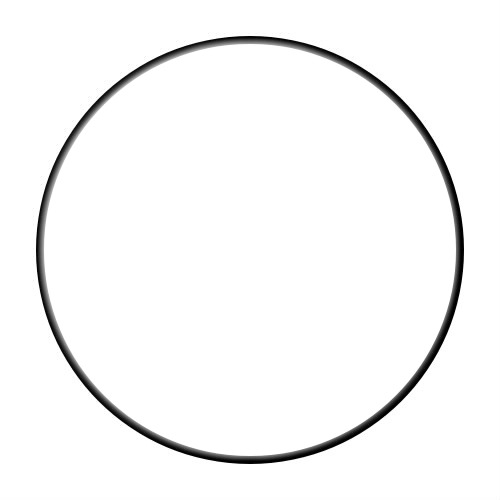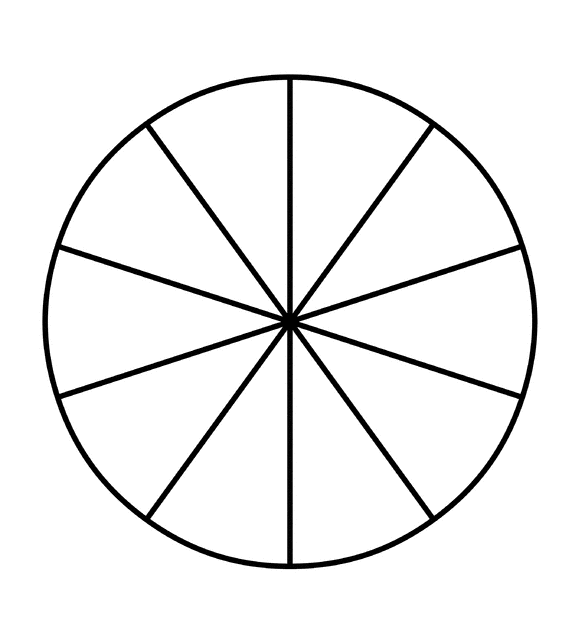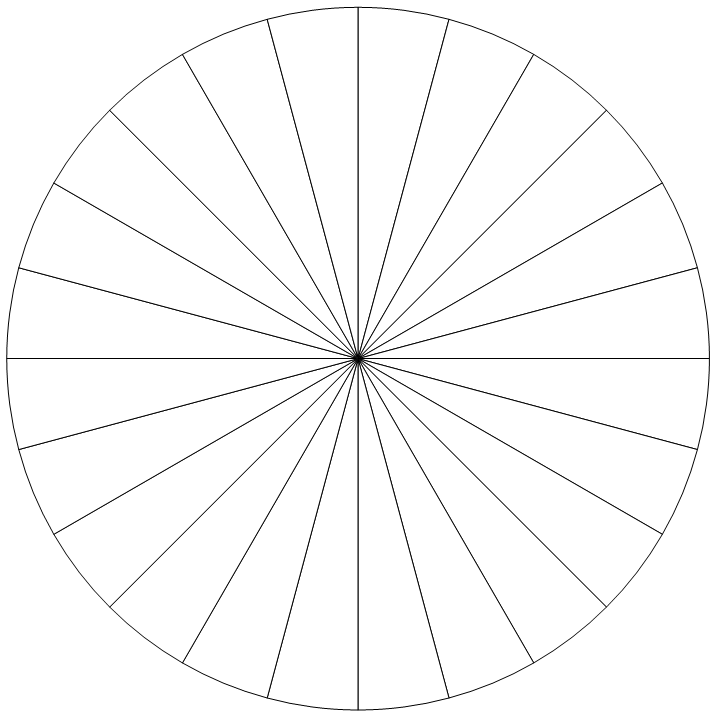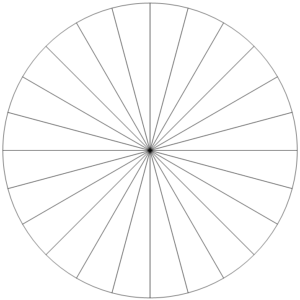By Diane Harris, HQ Stitch Brand Ambassador
I have an ongoing love affair with the Dresden Plate. It began about 10 years ago when I made this quilt from vintage blocks.

All Drezzed Up by Diane Harris
I’d purchased 20 blocks for 20 dollars (my kind of bargain!) and I made 32 smaller plates to set on top of the big blocks and at the intersections. Twenty yards of vintage rickrack and one wavy edge later, All Drezzed Up was born. It was such fun to make.
I’ve made several Dresden quilts since then and I thought it would be fun to introduce you to the things I have learned and the methods I use. I’ll do this in several parts.
- The math and mechanics
- Making the blades and plates
- The applique
- Creating a Dresden design
- Ideas for quilting
There might be more because that’s how my mind works. Once I get going, the ideas start to percolate and sometimes it goes on and on.
The Math and Mechanics of Dresden Plate
When I made my first quilt, I hadn’t taken time to think about the math behind Dresden Plates. Turns out it’s pretty straightforward. Stick with me here because you’ll be glad to understand this!

Here’s a circle. A circle can be divided into parts. Today we’re going for equal parts.

Above you’ll see six equal parts.

Here we have 10 equal parts. And below there are 24 equal parts.

Dresden Plates are just like these circles. They can have different numbers of blades.
If the circles above were Dresden Plates, the difference would simply be that some are divided into more parts than others.
Now, look at two circles side by side. Notice how differently the wedges or pie pieces are shaped.


The shapes are very different. The first circle has fat shapes with very angled sides. The second circle’s wedges are skinny with very straight sides. This concept will help you along the way:
The more blades there are, the straighter the sides will be.
By “straighter,” I mean the sides are more up-and-down. Chew on this idea, and I’ll be back soon with more.
Isn’t this exciting?! You’re well on your way to understanding the math and mechanics of the Dresden Plate! Here’s some eye candy to tide you over until I post Part 2.

28 Dresden Drive by Diane Harris
Coming soon! Part 2: More Math and Mechanics

Leaving me in suspense! Ha-ha…I look forward to more information.
Staying tuned…
I can’t wait for your next post
Love those quilts, never tried making a Dresden plate quilt but yours looks so awesome, mostly the small one on the big one. BEAUTIFUL! Look forward to seeing what and how to make more.
Thanks for the new way to look at dresden plates. Looking forward to more information.